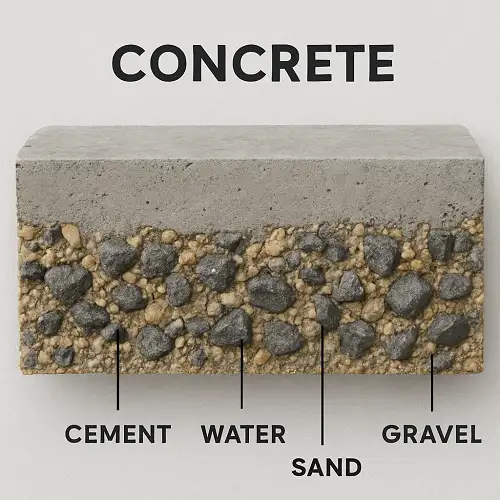Definition of Concrete
Concrete is a stone-like material obtained by permitting a carefully proportion mixture of cement, sand, gravel, or other aggregate and water to harden in forms of the shape and dimensions of the desired structure.

Major Components
- Binding material: Cement or Lime.
- Aggregate: Fine or Coarse Aggregate.
- Water.
The bulk of the material consists of fine and coarse aggregate. Cement and water interact chemically to bind the aggregate particles into a solid mass.
Binding Material
Cement
- Cement is the most common binding material.
- The most common types of cement are Ordinary Portland Cement (OPC), Portland Pozzolana Cement (PPC), etc.
Lime
- Lime is used in some specialized construction.
- Used in flooring and plastering.
Aggregate
Fine Aggregate
- Pass through a 4.75 mm sieve.
- Fine aggregates are naturally sand or crushed stone dust.
Coarse Aggregate
- The size is usually 10mm to 40mm.
- Coarse aggregate is crushed stone, gravel, or broken bricks.
- Provides strength and durability.
- Clean and free from organic impurities.
Water
- The water-cement ratio significantly impacts concrete strength.
- Reacts with cement to form a paste that binds aggregates.
- Affects workability, strength, and durability.
- Excess water weakens the concrete and leads to shrinkage cracks, while insufficient water results in poor workability and incomplete hydration.
Properties of Concrete
- Strength.
- Elastic proportion.
- Fatigue.
- Durability.
- Impermeability.
- Workability.

Join our professional courses on qLearnify